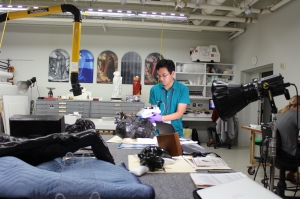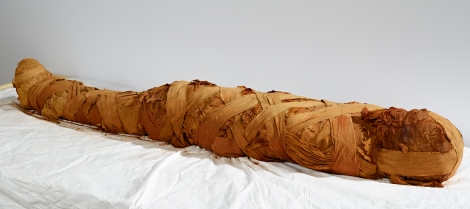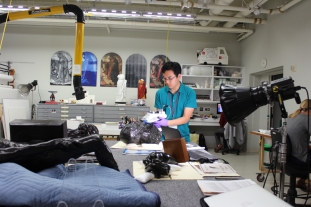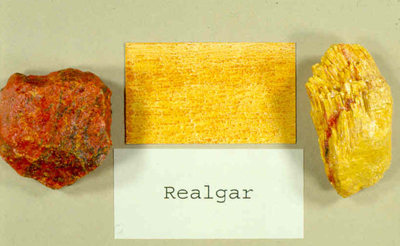ART+SCIENCE FELLOWSHIP
ART+SCIENCE FELLOWSHIP

Apply this Winter for the 2017—18 Art+Science Fellowships! This page is still under construction for the 2017 applications.
Sophomore and Junior year science and engineering majors at Stanford are encouraged to apply for the Chen-Yang, Geballe, and VPUE Fellowships to work in the Art+Science Learning Lab at the Cantor Arts Center.
Here’s your chance to study the technical art history of any object in the Cantor Arts Center collection. Learn cutting-edge scientific techniques such as x-ray fluorescence, x-ray diffraction, mass spectrometry, and computed tomography by analyzing art objects. Work with professional conservators and faculty in Stanford’s Engineering School to plan and execute an independent research project.
Project Possibilities:
Light-Art Interactions: Light allows us to see, appreciate, and analyze art objects, but too much of it can lead to damage. Techniques such as fadeometry can help conservators assess the proper dose of light in an exhibition, and analysis of pigment degradation in light can aid restoration efforts. A new effort in the Art+Science Lab is to establish tools for studying how modern pigments, papers, textiles, and other art materials respond to light exposure. What can accelerated aging techniques help us predict about an art object? Pigment degradation in pre-modern works such as chiaroscuro woodcuts in our collection is one possibility.
Perform technical examination and material analysis on these woodcuts using noninvasive and micro-invasive methods. Micro fade testing to assess light sensitivity of items from the collection could be considered. Help develop a tool that can be used in the laboratory setting.
Ugo da Carpi, Italy c. 1527-1530 Diogenes (after Parmigianino, Italy 1503-1540)

Glass Deterioration: Cantor has a large collection of Italian 19th C. glass from Venice. Some of this glass is deteriorating as evidenced by weeping and crizzling and must be maintained in a stable, environment around 42%RH.

Leaf and Dragon Compote. An example of decorative Venetian glass from the Salviati & Co. holdings at Cantor. Image copyright: Cantor Arts Center.
Textile and Resin Analysis: Chantress of Amen

Past or Continuing Projects:
Rodin Casts: Cantor has approximately 150 Rodin casts done after the artist’s death that could be compared with casts done during his lifetime. Examples in our collection come from many different foundries. How different are the surfaces of these casts today? Can we establish a link between surface condition and specific foundry techniques? Additional work can be done on the outlier casts discovered in an earlier fellowship.

Athenian Ceramics: The chemical composition of Athenian ceramics and gloss layers can be analyzed using high-resolution x-ray fluorescence, and x-ray absorption near edge spectroscopy. What can this information tell us about the techniques used to make these ceramics? Can these techniques offer us any clues to what is invisible to the naked eye? This project is part of an established collaboration with the Stanford Synchotron Radiation Laboratory and a Fellow will also have the opportunity to perform experiments at the Getty Conservation Institute. Continuation of this project is a possibility.
Realgar and Orpiment Pigments: These red and yellow pigments are both arsenic sulfides that were commonly used in late 17th century and early 18th century paintings. A quantitative measure of their color using optical spectroscopy can be devised to distinguish them. It has been observed that under certain conditions their color changes over time. How do these pigments degrade? From the analysis of the degraded color, can the history of the painting be reconstructed? Realgar has been the research project for two Fellows. Continuing with Orpiment is a possible project.

Realgar is the red/orange mineral, and orpiment the yellow one. Image from patrickbaty.co.uk
Post-research opportunities:
- Work with Cantor and SSRL staff to publish a paper
- Present research at a conference
- Develop an exhibition around your research
“Hidden Elements”, a focused section of the Fall 2016 installation at Cantor Arts Center curated by student Diane Wu (Materials Science) on research undertaken by undergraduates Sara Sheffels and Kevin Chow (Materials Science). Kristel Bugayong drew storyboards and edited the i-Pad videos.
“True Colors”, a 2011 exhibition in the Gibbons Gallery at Cantor Arts Center by student intern Ivy Nguyen (Chemical Engineering)
“Finding Sellaio”, a 2004 exhibition in the Gibbons Gallery at Cantor Arts Center by student intern Alisa Eagleston
Eligibility:
- Stanford undergraduate science and engineering majors in their sophomore or junior year.
Schedule and Funding:
Applications will be accepted on a rolling basis. We will begin to accept applications soon in Winter Quarter 2017
Fellows will be required to spend time during Winter and Spring quarter finalizing their project proposals and performing background research on the object and technique. Research can take place over winter, spring and the summer, with the opportunity to extend the fellowship through Fall 2017 if enough hours remain.
Winter:Part-time, $15-$17/hour
Spring: Part-time, $15-$17/hour OR independent study credit
Summer: Full-time, $6000 stipend
Conference travel grant and research funds up to $5000
Application instructions:
Email the following to skrm@stanford.edu:
- Curriculum vitae
- Undergraduate transcript
- Proposal and research statement (See instructions below)
Request at least one letter of recommendation from a Stanford faculty member. These must be submitted to Susan directly from the faculty. No late recommendation letters will be accepted and only two letters will be read by the committee
Proposal instructions: Select one of the potential projects listed above and describe your interest in that project. Alternatively, come up with a project of your own.
- Describe the object’s historical and cultural significance.
- Describe any existing conservation science publications and research related to this project.
- List materials characterization techniques you would like to use in your study.
- List any experience with materials characterization techniques that you may have.
- Do you think this project might have the potential to become an exhibition at Cantor?
- You may find it useful to consult the Cantor Arts Center Collection database. http://cantorcollections.stanford.edu
Research statement: In 200 words or fewer, describe your personal interest in technical art history.
Further questions?
Contact Susan Roberts-Manganelli at skrm at stanford dot edu.








